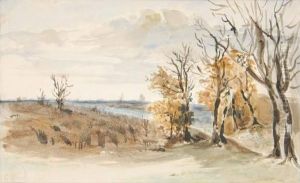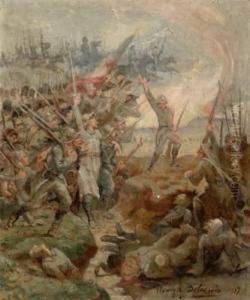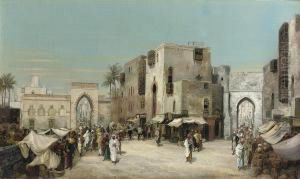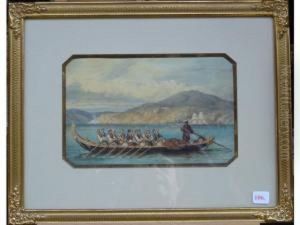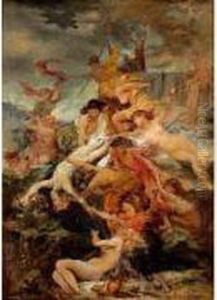Henry-Eugene Delacroix Paintings
Ferdinand Victor Eugène Delacroix, known as Eugène Delacroix, was a dominant figure in the French Romantic school of painting. Born on April 26, 1798, in Charenton-Saint-Maurice, France, Delacroix's influence extended beyond painting, affecting the works of future Impressionists and Symbolists with his bold technique and expressive use of color. Despite a common misconception, Delacroix was not related to the famous leader of the French Revolution, Charles-François Delacroix, but was actually the son of Charles Delacroix, who served as a minister of Foreign Affairs and ambassador. His mother, Victoire Oeben, came from a family involved in the arts, which likely influenced his early interest in painting.
Delacroix received his formal art education at the École des Beaux-Arts in Paris, where he was a student of Pierre-Narcisse Guérin. He was profoundly influenced by the works of Peter Paul Rubens and the Venetian Renaissance painters, which is evident in his use of color and the dynamic compositions of his paintings. Delacroix's first major painting, "Dante and Virgil in Hell" (1822), was a critical success and set the tone for his career. His most famous work, "Liberty Leading the People" (1830), celebrates the July Revolution of 1830 and is a symbol of the fight for freedom.
Throughout his career, Delacroix was fascinated with the exotic and often drew inspiration from his travels to North Africa. These experiences influenced works such as "Women of Algiers in their Apartment" (1834), showcasing his ability to capture the essence of foreign cultures. Despite his fascination with the exotic, Delacroix was deeply involved in the French art scene and took part in the Salon, an official art exhibition of the Académie des Beaux-Arts in Paris. He also painted several murals for government buildings, including the Palais Bourbon and the Louvre.
Delacroix's approach to painting, characterized by his expressive brushwork and study of optical effects of color, anticipated the Impressionist movement. His journals, filled with reflections on art and society, reveal a man deeply engaged with the intellectual currents of his time, including his friendships with notable personalities like George Sand and Frédéric Chopin.
Eugène Delacroix died on August 13, 1863, in Paris. His legacy is marked by his contributions to the Romantic movement and his influence on the generations of artists that followed. Today, Delacroix is remembered as one of the most important French painters of the 19th century, with works that continue to inspire admiration for their emotional depth and vibrant color.







